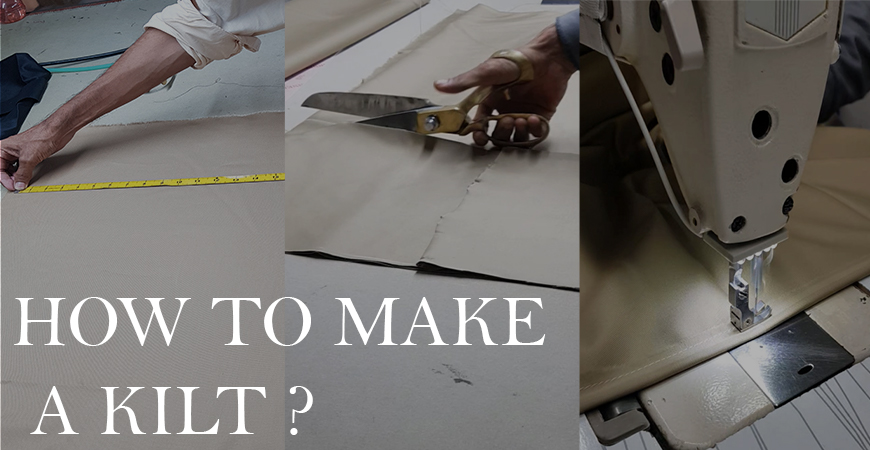How to Clean a Utility Kilt: Essential Tips for Proper Care

Cleaning a utility kilt may seem daunting. Basically it is a straightforward process that can help maintain its appearance and longevity. Regular washing and proper care will keep the fabric looking fresh and prevent unnecessary wear. Understanding the fabric type and care instructions is crucial for effective cleaning.
To start it is important to check the label for specific washing guidelines. Most utility kilts are made from durable materials like cotton or polyester. For stubborn stains spot treatment with a gentle detergent can be effective. It ensures the overall integrity of the kilt remains intact.
An additional tip is to air dry the kilt after washing. It prevents damage often caused by drying machines. Regular inspection for any loose threads or wear and tear should also be part of the maintenance routine, as timely repairs can extend the kilt’s life significantly.
Utility Kilts Overview
Utility kilts combine traditional kilt elements with modern functionality. They feature practical designs suited for various activities and occasions, making them versatile for everyday wear.
Defining a Utility Kilt
A utility kilt differs from traditional Scottish kilts through its emphasis on practicality. It typically includes pockets, loops and attachment points for tools or accessories. Styles can vary widely in both simple and intricate designs. These kilts are often made for men but some designs for women as well.
The hemline generally falls around the knees, allowing freedom of movement. Men’s utility kilts usually feature a pleated back, which help in mobility, reflecting a balance of comfort and style. gents kilts
Materials and Design
Utility kilts are crafted from various materials, with cotton canvas and denim being popular choices for their durability. Some may incorporate blends with synthetic fibers for enhanced resilience against wear and tear. Many utility kilts also come in fabrics suitable for outdoor use.
The design includes functional elements such as cargo pockets, tool loops, and hook-and-loop closures. Essential details may also include adjustable waistbands to ensure a comfortable fit. Colors range from classic black to vibrant hues for personal style preferences.
Occasions for Wearing a Utility Kilt
Utility kilts are versatile enough for many occasions. They are often chosen for casual outings, outdoor events, or specific work environments where movement and utility are essential.
An excellent choices for hiking, festivals or social gatherings where a relaxed dress code applies. Their design allows for pairing with various tops, from T-shirts to button-ups. It enables wearers to adapt to different settings.
In some cases, they may also be worn at themed events or gatherings celebrating Scottish culture. Utility kilts can serve as stylish yet practical alternatives to traditional pants or shorts. It enhances comfort while maintaining a unique look.
Preparatory Steps for Cleaning
Preparing to clean a utility kilt involves essential steps to ensure effective and safe cleaning. Knowing what to look for on care labels and gathering the right supplies makes the process smoother.
Reading Care Labels
Care labels provide critical instructions specific to the fabric and construction of the kilt. They often contain information regarding washing, drying, and ironing.
Key elements to look for include:
- Washing temperatures: It requires hand washing.
- Drying methods: Check if tumble drying is suitable or if air drying is recommended.
- Ironing guidelines: Some fabrics may need a low-heat setting or could be ironed at all.
Ignoring these guidelines can lead to damage, such as shrinking or fading. Always take a moment to read care labels thoroughly before cleaning.
Gathering Cleaning Supplies
Selecting the appropriate cleaning supplies is crucial for maintaining the kilt’s quality. Basic supplies include:
- Mild detergent: Ideal for sensitive fabrics, preventing wear.
- Soft brush or cloth: Useful for spot cleaning and dust removal.
- Stain remover: For localized stains; ensure it’s compatible with the kilt’s fabric.
It’s also helpful to have:
- Buckets or basins: Needed for hand washing.
- Hangers: Essential for hanging to dry without distortion.
Having these items on hand will streamline the cleaning process and protect the kilt from potential damage. Ensure that all supplies are in good condition before starting.
Cleaning Process
Maintaining a utility kilt involves specific cleaning techniques to preserve its fabric. Depending on the type of stains or dirt different methods may be applied. The following sections provide detailed guidance on effective cleaning strategies.
Spot Cleaning
For immediate attention to stains, spot cleaning is highly effective. It prevents the stain from setting and minimizes the need for extensive cleaning sessions.
- Identify the Stain: Different stains require different treatment methods. Common stains include grease, mud, and food.
- Use a Gentle Cleaner: A mild detergent or fabric-specific cleaner works well. Apply it directly to the stain.
- Dab the Strain: Use a clean cloth to dab the stain.
- Rinse: After treating the stain lightly rinse the area with cold water.
- Air Dry: Allow the kilt to air dry. Avoid direct heat sources to prevent damage.
Hand Washing Techniques
Hand washing provides a careful cleaning option for utility kilts, especially those made from delicate or blended fabrics.
- Fill a Basin: Use cold water now add mild detergent. Use the right amount of detergent.
- Submerge the Kilt: Gently immerse the kilt ensuring it’s fully covered.
- Agitate Lightly: Use your hands to move the kilt through the water, focusing on any particularly soiled areas.
- Soak: Soak for about 15-30 minutes.
- Rinse Thoroughly: Empty the basin and again fill it with clean water. Rinse the kilt until the water runs clear.
Post-Cleaning Care
Proper post-cleaning care is essential for maintaining the utility kilt’s appearance and longevity. Attention to drying, ironing, and storage can significantly impact the garment’s fabric quality and shape.
Drying the Utility Kilt
After washing dry the utility kilt properly. Avoid wringing or twisting the fabric it distort its shape. Instead lay the kilt flat on a clean, dry towel and gently reshape it to its original dimensions.
Airing the kilt can also be effective. Hang it on a sturdy hanger in a well ventilated area. It should be away from direct sunlight. Sunlight can fade colors and weaken fabrics.
Ironing and Storage
Ironing helps maintain appearance and removes any wrinkles. Set the iron to the appropriate temperature for the fabric type. For cotton or polyester blends a medium setting is usually suitable. Always place a cloth between the iron and fabric to prevent direct heat exposure.
When storing the utility kilt, fold it neatly or hang it to maintain its shape. Use padded hangers to prevent creases. If space is limited, avoid overcrowding in a closet. Instead, consider breathable garment bags to shield it from dust while preserving its form.




